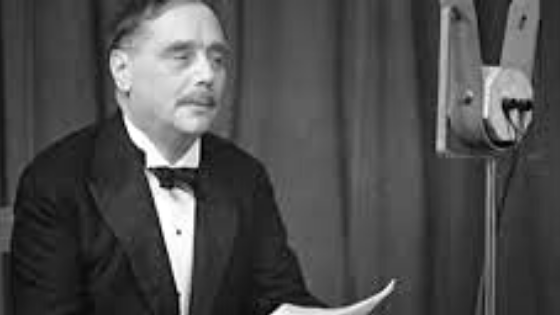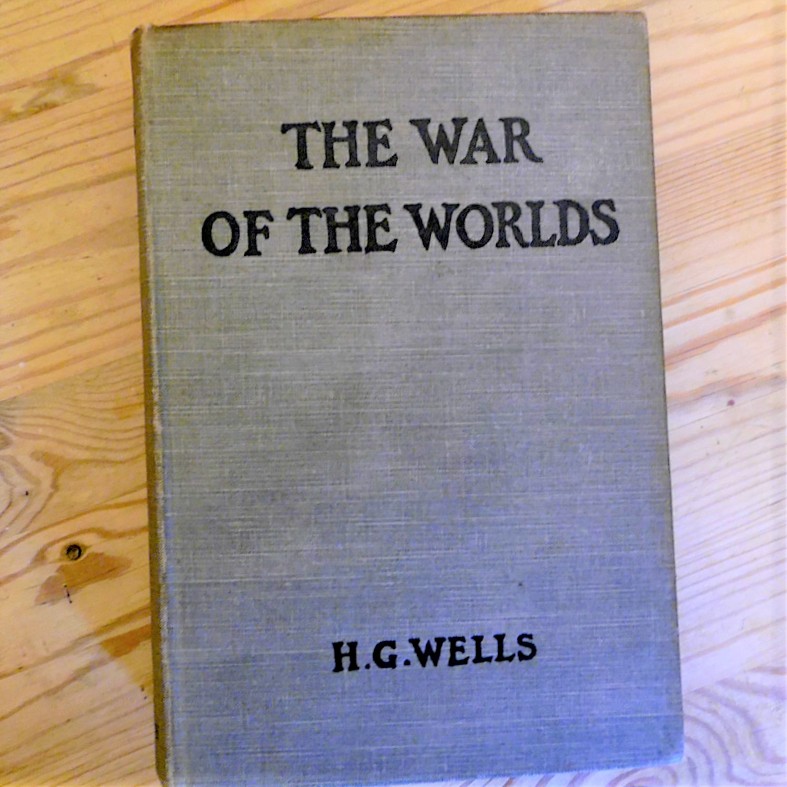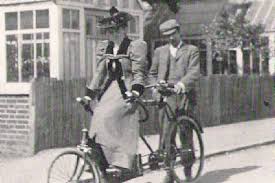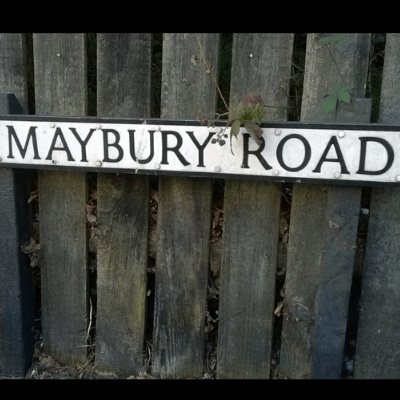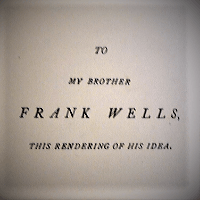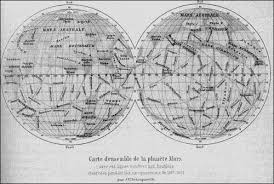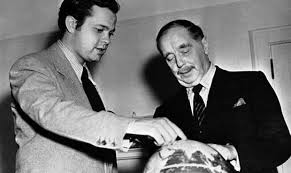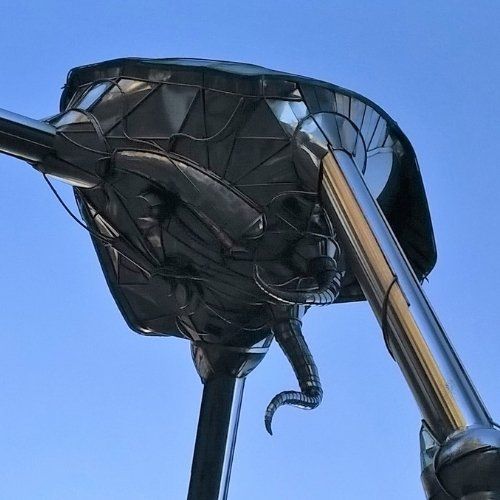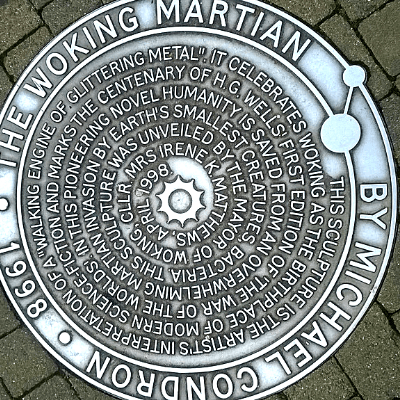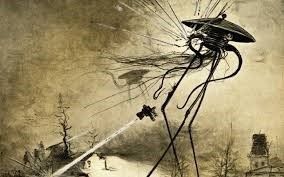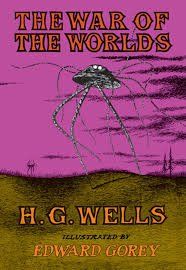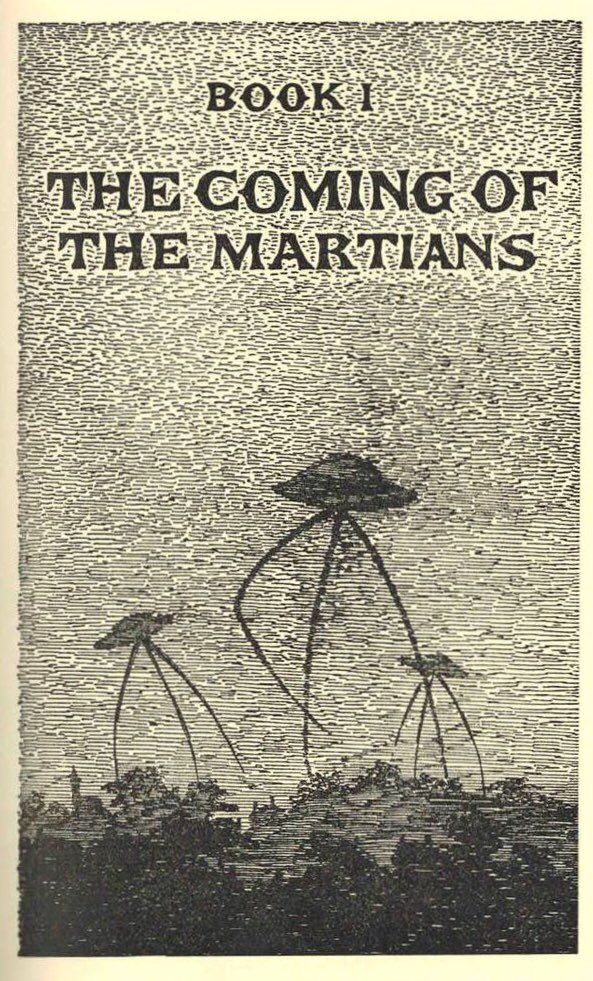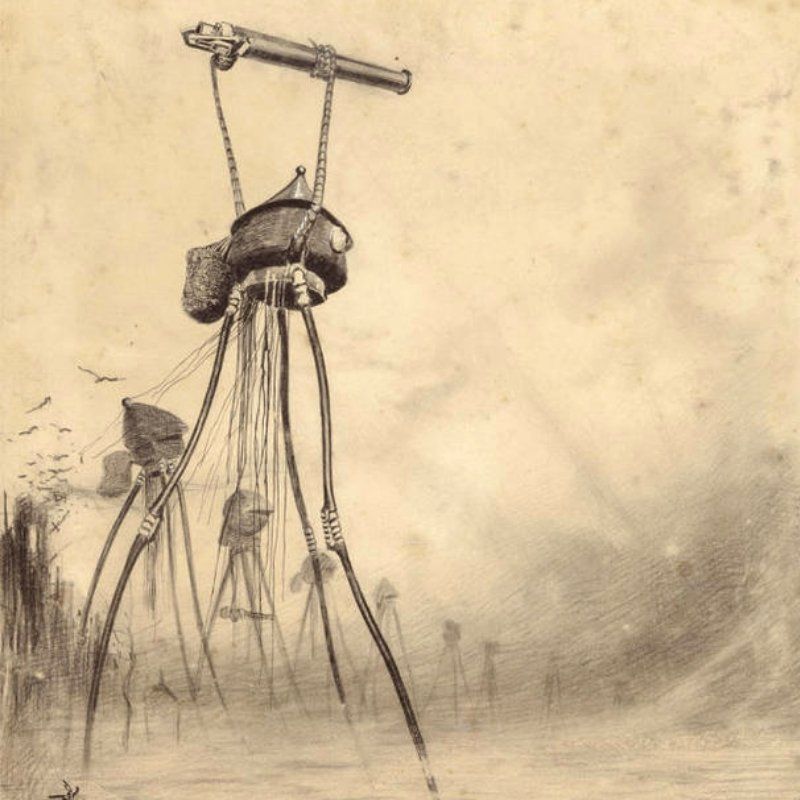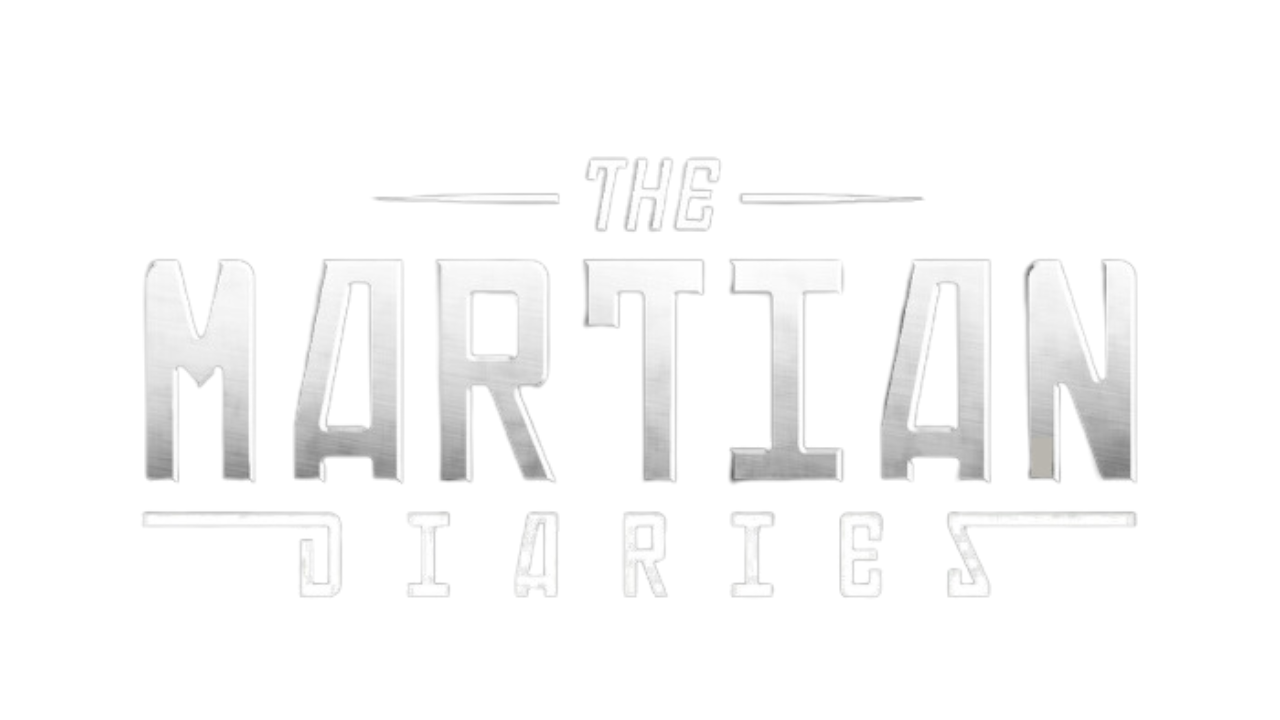THE WAR OF THE WORLDS STORY
H.G. Wells (1866 -1946) Author of The War Of The Worlds
The War Of The Worlds Story - H.G. Wells, Martians and Tripods
"Yet across the gulf of space, minds that are to our minds as ours are to those of the beasts that perish, intellects vast and cool and unsympathetic, regarded this earth with envious eyes, and slowly and surely drew their plans against us."
The War of the Worlds
(1898)
First Edition
Who would have believed that The War Of The Worlds,
written by H.G. Wells in the late Victorian era, would still be fascinating us over 125 years later? The classic science fiction story first appeared in 1897 as a serialisation in Pearson's magazine in Britain and Cosmopolitan magazine in the US. A year later it was published in hardback as a complete novel and has never been out of print since.
H.G. Wells - The Early Years
An acclaimed novelist, scientist and historian, H.G. Wells was born in Bromley, Kent on September 21st 1866, the fourth child of Joseph Wells, a shopkeeper, and his wife Sarah, a domestic servant. The family shop did not prosper and Joseph supplemented the family income as a professional cricketer for the Kent county team, although this was not regular or well paid work. Following an accident in 1874, the eight-year-old Wells, known as Bertie within his family, was confined to his bed with a broken leg. He passed the time by reading and soon developed a love of literature and writing. His mother later took a job as a live-in lady's maid at Uppark, a country house in Sussex. Although the family were not allowed to accompany her, young Bertie was invited to use the extensive library and his love of books deepened.
Education
Wells' education began in earnest at a private school in 1874, although the family finances were deeply affected when his father sustained a thigh fracture in 1877 that ended his cricketing career. Struggling to pay school fees for their four sons, the parents eventually placed them all in various apprenticeships. Bertie had to leave his school in 1880 aged fourteen, and he spent three miserable years at a drapery establishment as a live-in apprentice working thirteen hours a day. This must have been an unpleasant period for Wells who by then was an avid reader and keen student. However, he later used the experience to good effect in his novels of everyday life, which included The Wheels Of Chance, The History Of Mr Polly
and Kipps.
In 1883 Wells persuaded his parents to allow him to leave his apprenticeship to take up a pupil-teacher position at Midhurst Grammar School in West Sussex, where he had previously been a pupil for a short time. The following year, aged eighteen, he won a scholarship to the Normal School of Science, (later renamed the Royal College of Science) in London, where he studied Biology under Thomas Henry Huxley (1825- 1895). Huxley was an English biologist and anthropologist who became known as 'Darwin's Bulldog' because of his strong support for Charles Darwin and his theory of evolution.
Wells joined the school debating society and was a founder member of his school magazine, The Science School Journal. It was there that he was first able to express his thoughts on science, history and literature and where his first story The Chronic Argonauts was published. It was later re-worked for publication in 1895 as his first novel, and renamed The Time Machine.
Wells finished his schooling in 1887 and had a variety of teaching posts, including a short spell at Henley House School in London 1889-90, where he taught the young A.A. Milne, whose father ran the school. Milne grew up to become the world renowned author and creator of Winnie The Pooh.
Woking and The War Of The Worlds
In 1891 Wells married his cousin Isabel but the marriage was short lived. They separated in 1894 enabling him to live with Amy Robbins (known as Jane), one of his students with whom he had fallen in love. The couple moved to a rented house in Woking, Surrey in May 1895 and married in October of that year.
Jane and H.G. Wells enjoying a day out in Woking
The stay at Maybury Road, opposite the railway line in the centre of Woking, lasted just eighteen months but is considered to be perhaps the most creative and productive period of Wells' writing career. The Time Machine was finished and published there and, amongst several other titles, he conceived and wrote The War Of The Worlds. This became one of his defining novels, later earning him the title 'Father of Science Fiction'.
The house in Maybury Road Woking now features a blue plaque commemorating H.G. Wells' occupancy !895-96
The War Of The Worlds
is set in Woking and written in the first person by an un-named writer living in Maybury Road. It reads like a factual account of a real-life Martian invasion of Britain and was the first major work of fiction to feature a conflict between Earth and aliens from another planet. It is one of the most commented upon books in the science fiction genre.
The dedication in the first edition copy of 1898 seems to suggest that Wells may have been inspired to write the story by his brother Frank.
Apparently, the plot of The War Of The Worlds may have evolved from a discussion between Wells and his brother about the British invasion of the south Australian state of Tasmania in the late eighteenth century, which had a devastating effect on the native Aboriginal population. The brothers pondered what might happen if Martians invaded Britain and treated the population the way the British invaders treated the Tasmanians.
It is known that Wells often walked on Horsell Common near Woking, the site of the landing of the first Martian cylinder. I can visualise the two brothers discussing the details of the imaginary invasion and suggesting the sandpit there as a suitable site for the aliens to land.
Mars and Martians
In 1895 the American astronomer Percival Lowell published a book on Mars with many illustrations of the features of the landscape. He was convinced that the 'canali' (straight lines or channels) previously observed by Italian astronomer Giovanni Schiaparelli in the 1870's, were artificial canals made by Martians. This idea fuelled popular interest in Mars at the time so perhaps it was no coincidence that H.G. Wells published
The War Of The Worlds
just two years later.
19th century map of Mars by Schiaparelli
The War Of the Worlds 'Panic Broadcast'
In 1938, The War Of The Worlds became a talking point for a new generation when it was famously broadcast in America as a live radio drama by The Mercury Theatre on the Air, part of the Colombia Broadcasting System radio network. Directed and narrated by the young actor and future film maker Orson Welles, it was performed and broadcast live in a Halloween adaptation of H.G. Wells' novel on Sunday October 30th. So realistic was the broadcast that listeners were alleged to have panicked and called police, newspapers and radio stations in alarm, apparently convinced that a real Martian invasion was taking place not far from New York.
. The media made a great deal of the incident but evidence later showed that the actual numbers of radio listeners did not tally with the large scale of panic reported by the newspapers. However, the broadcast did no harm to the blossoming career of Orson Welles, and recent commentators have remarked that this was an early example of 'fake news'. H.G. Wells himself was apparently surprised and bemused that his story from forty years earlier had gained so much fresh attention.
Orson Welles and H.G.Wells famously met for a radio interview broadcast on Radio KTSA San Antonio on October 28th 1940.
The War Of The Worlds Art
There are now sculptures in Woking town centre depicting H.G. Wells and elements of his iconic invasion story, including a 7m (23ft) high chrome and stainless steel Martian tripod by sculptor Michael Condron, unveiled in 1998. The nearby commemorative plaque celebrates Woking as 'the birthplace of modern science fiction'. There is also a small sculpture of a Martian cylinder that landed on Horsell Common, partially submerged in the ground, just like the one described in the book. The bacteria that eventually destroyed the Martian invaders is depicted on paving slabs nearby and one can even be seen under a leg of the tripod.
The Woking Martian and commemorative plaque
There have been many atmospheric illustrations and artwork for The War Of The Worlds' since it was first published as a hardback book in 1898. The sepia and black drawings done by Brazilian artist Henrique Alvim Correa for a 1906 version, have become synonymous with the terror of the Martian invasion. H.G. Wells apparently greatly approved of them and said, “Alvim Correa did more for my work with his brush than I with my pen.”
Illustration by Alvim Correa (1906)
In 1960, a special edition of The War Of The Worlds
was published in New York for the Looking Glass Library Series, with the distinctive pen and ink drawings by illustrator Edward Gorey on the cover and at the beginning of each chapter. The unforgettable work of these two illustrators has undoubtedly contributed to the enduring fascination with Wells' classic story of invading Martian tripods.
Edward Gorey illustrations for The War Of The Worlds
In the years since the Orson Welles broadcast, there have been two major film adaptations of the book - in 1953 and 2005. Both were set in modern day America and have contributed to the ongoing appeal and influence of The War Of The Worlds and our fascination with Mars and Martians. The book has never been out of print and has inspired various alien themed films, comic book adaptations, radio dramas, television adaptations, Jeff Wayne's iconic music album and sequels by other authors. The idea of Martians stalking us in their metal fighting machines, armed with heat-rays, looks set to hold its appeal for many years to come. H.G. Wells would surely be delighted that one of his earliest written works has become so embedded into our modern popular culture and synonymous with our concept of extra-terrestrial invasion.
“The chances against anything manlike on Mars are a million to one,” he said.
From The War Of The Worlds
by H.G. Wells (1898)
